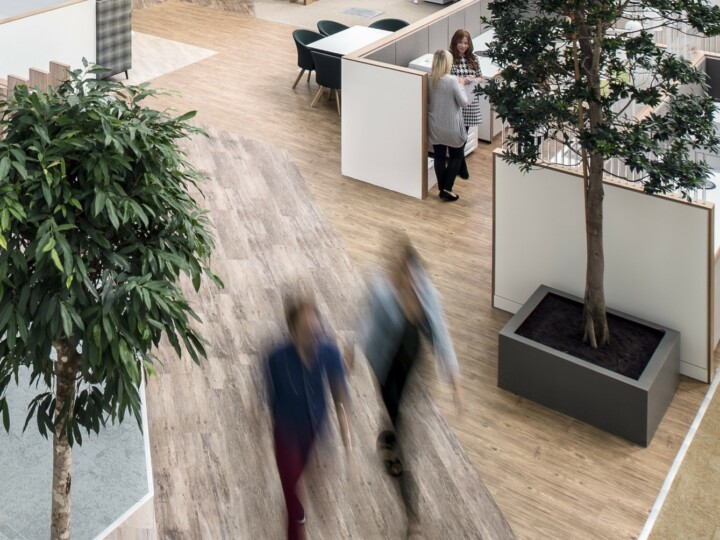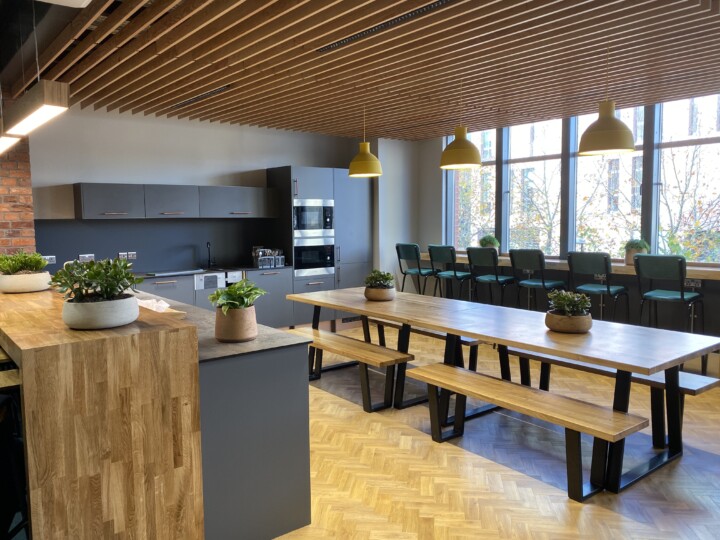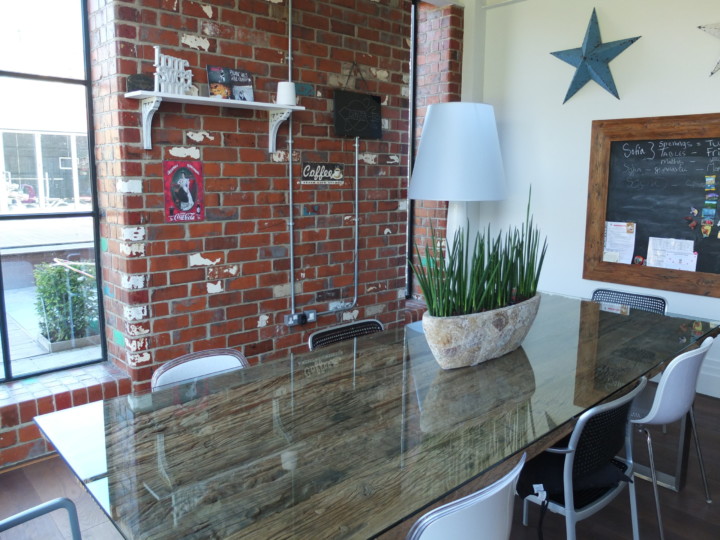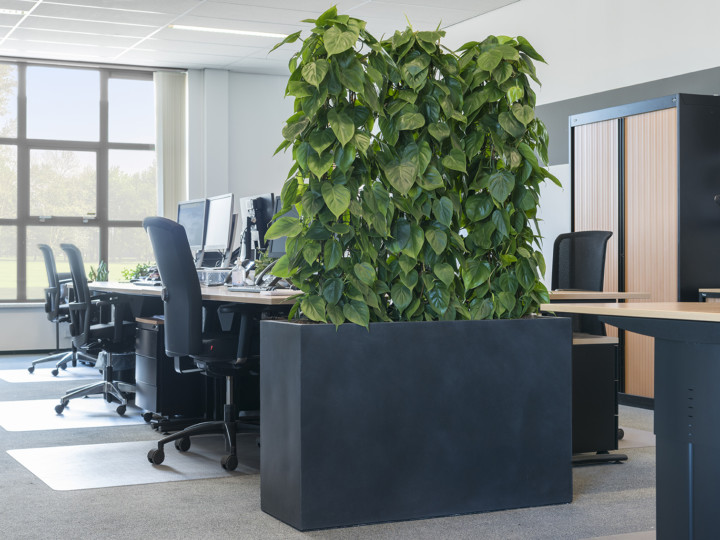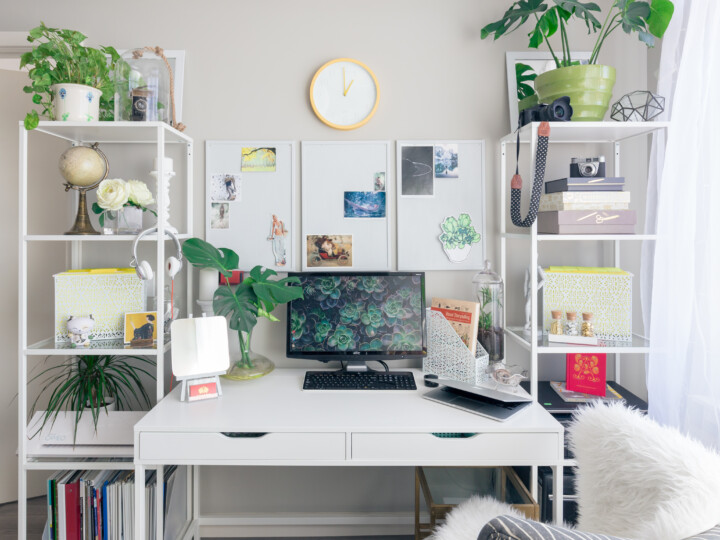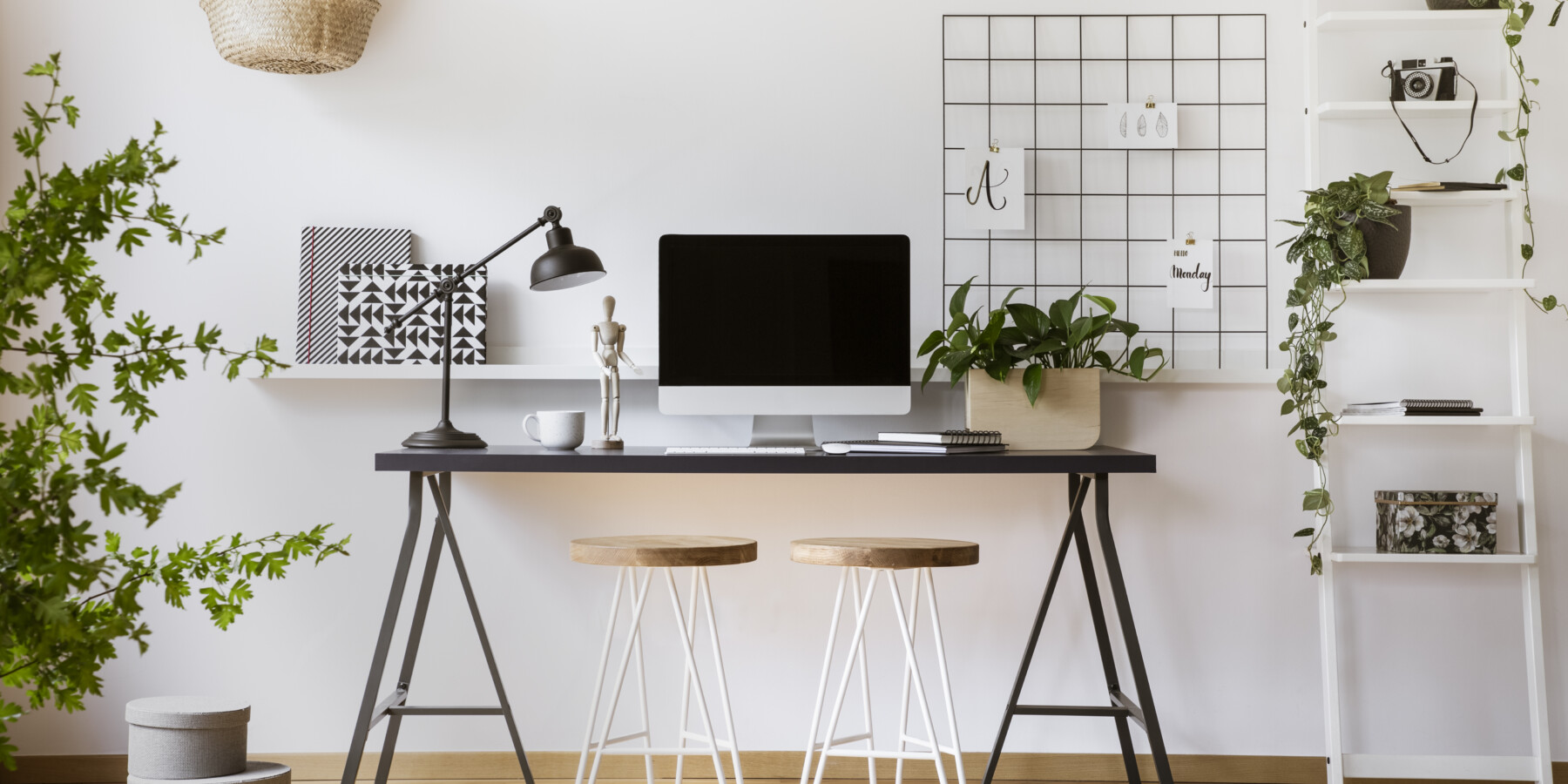
As winter settles in, house and office plants are here to help, improving our inside air, health and wellbeing.
As I write this the skies are the colour of pure gloom and freezing rain is coming mottling the view from my home office window. January certainly is the month of retreating indoors.
In truth, we are all indoors a great deal more than our ancestors (by some measures, we are inside for an average of 90% of the time). However, this time of year is when we really do batten down the hatches in a kind of hibernation. Add to that the months of on-off Stay At Home guidance and, well… you get the picture.
Take a breath
Yet we know that being out and about is good for us in so many ways. Fresh air, exercise, being among people, all contribute to better health in manifold ways. The Covid-19 pandemic, though responsible for us being indoors more, also highlighted the importance of fresh air, as we are less likely to catch a virus out of doors.

Taking in fresh air is also vital for our respiratory health in general. Recently I read an article about Russian kindergartens, where it used to be common practice for infants to sleep outdoors, no matter the temperature, to help combat the spread of TB, but that is a particularly extreme example!
Then there is the biophilic element. Put simply, biophilia describes our innate and instinctive connection with nature, and how this connection in turn enhances our state of wellbeing. Forest bathing is a recent term, but simply enjoying a walk through woodland is something most of us have experienced without giving it a name.
The lift we experience from seeing any view of nature runs deep. We may not be aware of it, but seeing natural features such as trees, water and plants speaks to our ancestral roots when we lived outdoors and had a more direct link to nature. Seeing or being among natural elements has been proven to improve our mental health and general sense of wellbeing. We are also more productive, creative and better at concentrating when we have a dose of nature in our daily lives.
Healthier future workplaces
While the last two years have challenged businesses in new and unexpected ways, we were pleasantly surprised, as a business which puts plants into workplaces, to see an upsurge in demand for our products, even while so many of us had to retreat to our homes to work for months.
Over time, the picture has become clearer: the pandemic has forced or accelerated a change in the way we view the workplace. We want some of the comforts of home in the office, design elements that welcome us and encourage a better sense of wellbeing. Employers, keen to tempt people back to the workplace, are embracing this, and reconfiguring office spaces accordingly.
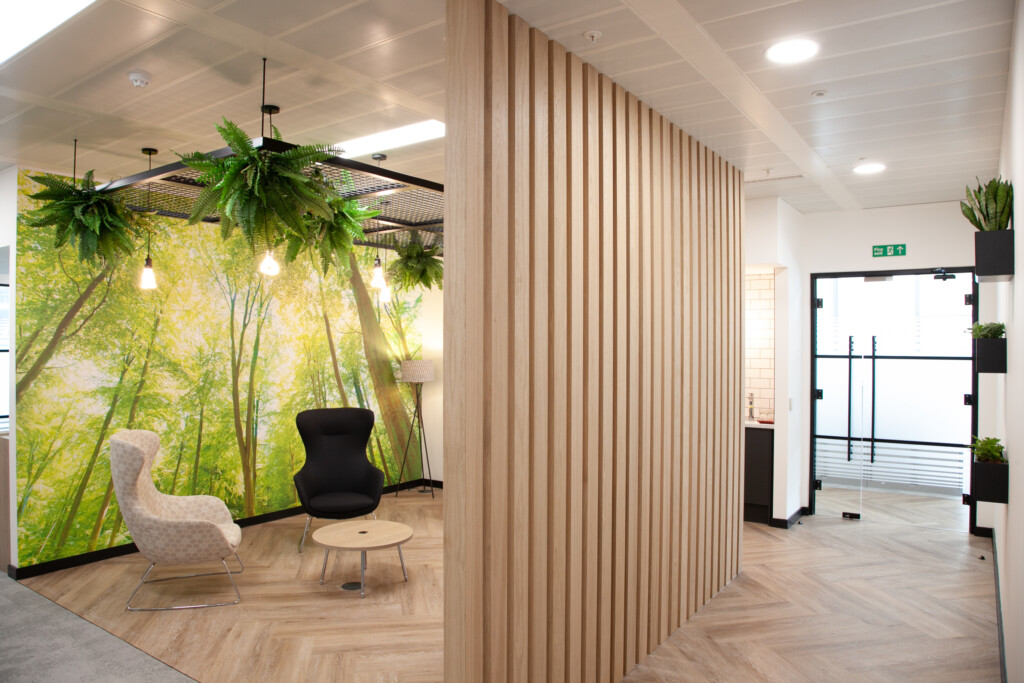
Post-pandemic studies reassessing how workplaces should change now we have seen some of the benefits of working from home have highlighted that offices still have a place in our working lives. In particular, they are considered good for collaborative working, career development and a sense of belonging to an organisation. For focus work, however, home working can be more effective.
A recent piece in the Economist talks of socialising and flexibility as key elements of future working. A workplace that can offer spaces for getting together to talk through a project, corners where you can squirrel yourself away to concentrate can be a place you actually want to be in.
The comforts of home are appealing, and certainly nurture our health and wellbeing very effectively, so offices of the future need to emulate that feeling where possible.
Biophilic benefits
This is where a biophilic perspective is important. Introducing natural elements to the workplace instantly brings life to the spaces in which we work and office plants are easy ways to achieve this.
Plants are biophilic powerhouses in the workplace. Scientifically speaking, live office plants clean our air, taking toxins and dust out of the atmosphere we breath, while also upping the humidity and dishing out healthy doses of oxygen. All of which is ideal in spaces which often have very little fresh air circulating.
What’s more, indoor live plants provide us with an instant visual link to nature (the biophilic aspect), which in itself has very real effects on our health and wellbeing. More simply still, having plants about the place make our workplaces feel more welcoming and relaxing. Even fake plants can achieve that, good news if your workplace has low light levels.
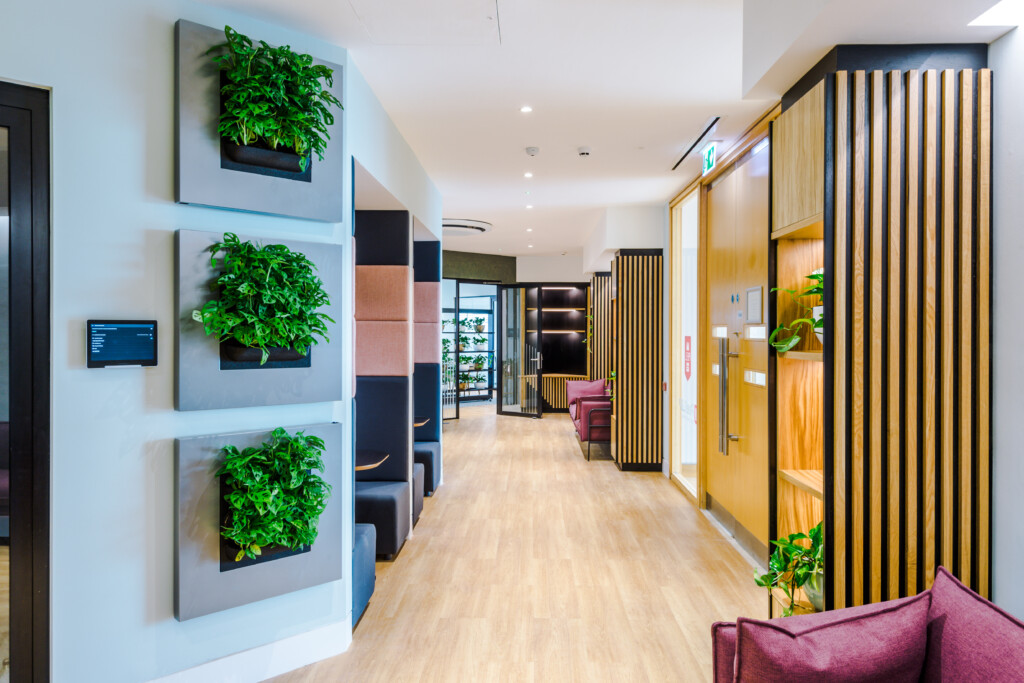
We have also found that planting can help employers create more reassuring workplaces in the light of the pandemic. Planted screens can separate working stations, while thoughtfully placed individual pot plants can prevent people leaning over your desk. We’ve also used interior live planting in troughs to encourage one-way foot flow around busy walkways.
Add to this the cleaner, more humid air, and you can see how live planting has a helpful role to play in creating healthier working spaces.
A closer look at the health benefits of plants
Plants help to keep us healthy by improving the air we breathe.
As we spend more and more time indoors, the quality of our indoor air is more important than ever. However, this air often falls far below healthy levels, especially in spaces where air circulation is poor.
Levels of CO2 and airborne mould, dust, bacteria and toxins can then build up, which in turn affects our health: headaches, dry coughs, poor concentration and drowsiness are all symptoms of poor air quality.
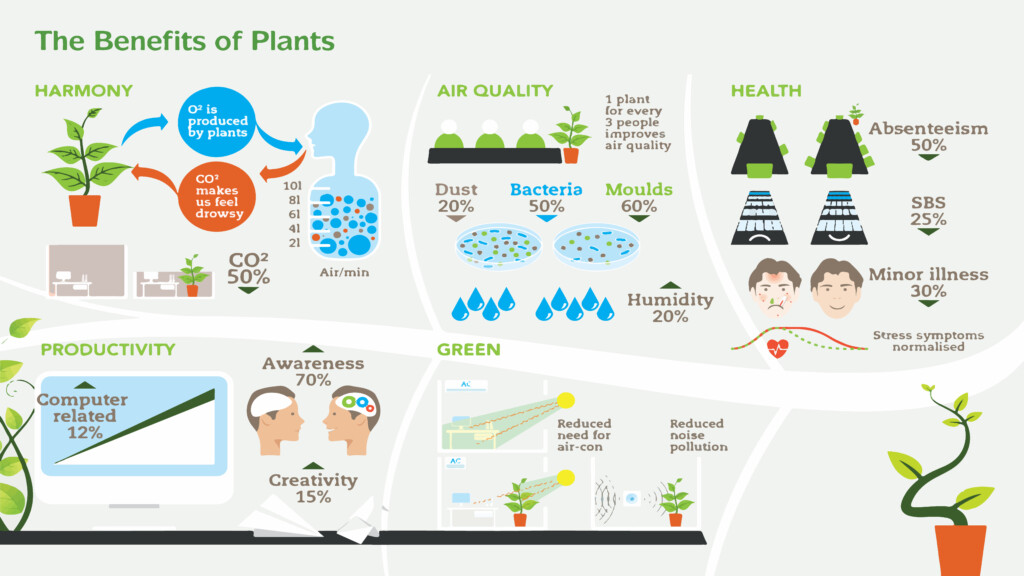
Plants improve indoor air in three important ways, by:
- replacing CO2 with O2
- improving humidity levels
- removing harmful toxins, dust, mould and bacteria
Plants can also:
- improve indoor acoustics; especially helpful in open plan settings
- increase moisture levels in a room by 17% in Winter (Wageningen Environmental Research)
- remove 87% of airborne indoor toxins in a 24-hour period (NASA)
- reduce airborne moulds and bacteria by 50-60% compared to rooms without plants (Stennis Space Centre)
- reduce sick leave by up to a fifth (Wageningen Environmental Research)
Click here for more on the health benefits of office plants.
